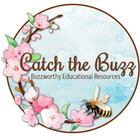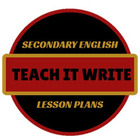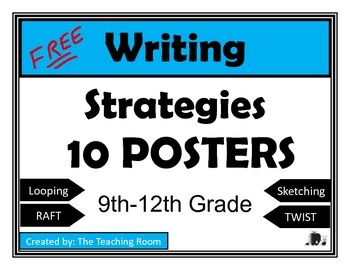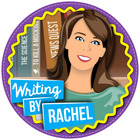 |
| Leah Cleary |
I know we’re not supposed to play favorites with the kids, but I can’t
help it. I have six kids, but I most definitely have a favorite.
Respectively, my kids are English I, English III, U.S. History, World
History, Sociology, and Psychology.
I love them all, truly I
do—I’ve spent so much time with each, reading, planning, and teaching,
so they really do all feel like my kids--but if I had to pick one to
spend the most time with, it would be world history.
“Why?” you might ask, especially when they are all wonderful and English was my first.
Well,
I think it may have something to do with what drew me to English in the
first place—stories. World history is a bunch of wonderful, disturbing,
beautiful, tragic, funny stories. They are stories that explain who and
where we are and how we got here. They are stories that connect people
in the U.S. to people in Estonia, and people in Nigeria to people in
Malaysia.
Also, history is an art—the art of looking at vast
amounts of seemingly unconnected evidence, making sense out of it, and
weaving it into a narrative.
 I think that is what I truly enjoy
doing and encouraging students to do. I love it when they say, “History
doesn’t change.” My challenge is to have them question that assumption
by the end of the term. I want them to see that when they read a
textbook or an online article, they are looking at one person’s (or an
editorial board’s) interpretation of evidence. While events and primary
sources may not change, interpretations of those events and sources are
wide-open to change.
I think that is what I truly enjoy
doing and encouraging students to do. I love it when they say, “History
doesn’t change.” My challenge is to have them question that assumption
by the end of the term. I want them to see that when they read a
textbook or an online article, they are looking at one person’s (or an
editorial board’s) interpretation of evidence. While events and primary
sources may not change, interpretations of those events and sources are
wide-open to change.
Keeping that in mind, there are a couple of approaches to teaching world history that I like to take: 1.
implementing primary and secondary source analysis and 2. bringing short fiction into the curriculum to illustrate points and approaches.
The
first approach is vital to any world history curriculum. The best way
to make students aware of the historical process is to have them engage
in it. First, students must understand the difference between primary
and secondary sources. I give a brief lecture about the difference and
then guide students through a process of analyzing a primary source (we
do this together).
Then, I put students in groups of four and
give each group a set of task cards. They have to determine whether the
source on each card is primary or secondary and explain why they
answered as they did. To take it a step further (and really demonstrate
using evidence to draw conclusions), I like to pair students off and
give each pair a copy of a receipt. They have to look at the purchases
on the receipt and construct a narrative about the person doing the
shopping based on the purchases.
It’s fun to have an actual
personality sketch of the person behind the receipt so that students can
compare their narrative to the actual person and see how close they
came to accuracy. I cinch the lesson by explaining that this is what
historians do. They may be right, wrong, or close, but they have to have
evidence from primary sources, and their claims should be reasonable
based on that evidence, or it is not a reliable source.
I like
to use snippets from various secondary sources, all with differing
assertions about the same topic, for students to compare. A topic that
fits the world history curriculum and lends itself to differing opinions
based on primary source evidence is the
fall of Rome. It’s difficult to find two historians who agree as to why it fell, let alone if it fell at all.
Students
need to see that the narratives we hear in history class are
conclusions woven from evidence. They should engage in the process so
that they can unweave the narratives and see the individual yarns from
which they are created. This will make them more discerning in what they
accept as fact.
The second approach I like to take uses short
fiction to illustrate the humanity of the people and cultures we are
studying. I knew I wanted to do something along these lines the first
time I taught world history. The students couldn’t wait to get to the
Holocaust.
I was perplexed by their excitement over such a horrific subject. “I love the Holocaust,” I heard more than once.
“Really?”
I would say. This troubled me. I thought a lot about it. There are
three reasons my somewhat limited mind could fathom that someone would
“love” the Holocaust: 1. they are truly depraved, 2. they enjoy the
feelings of superiority that “good vs. bad” scenarios give us all (
we would never engage in something as horrendous as that—
we would help), and 3. they are genuinely missing the human element in this calamity.
I
believe that a very few of the students I have ever taught fall into
the first category (although, statistically, some must). So, that leaves
the majority falling into categories two and three. “Us against them”
is human nature, so category two is understandable. It’s the reason
teachers often give for spending so much time on the holocaust, “We do
it so that it won’t happen again.” This is noble. After all, Hitler
himself remarked, “Who still talks nowadays of the extermination of the
Armenians.”
But that excuse neglects one important truth—it
still happens. Ask the Syrian migrants flooding into Europe. Visit the
Sudan. Or just watch
Hotel Rwanda. That excuse insults the masses still enduring genocide, and it gives us a false sense of the times in which we live.
So
that leaves us with category three. I think that many of us get swept
up in the atrocities and neglect the human element. Actual people were
tortured and killed. Actual families were ripped apart. And that is why
we study the Holocaust and other such atrocities—to remember and honor
the victims.
I could tell my students this, but I don’t think it
would mean much to them. I chose to illustrate the point with a short
story instead. Many of us have brought historical fiction into a history
class, but I think an effective way to discuss historical themes and
approaches can be through short fiction.
Before beginning a unit on World War II, we discuss nationalism and civil war in China.
My lesson
on this time period involves a brief PowerPoint with cloze notes,
primary source analysis (of course), and an original short story to
encourage students to consider appropriate ways to approach a subject
that sadly plagues the remainder of the course—genocide.
It is
my goal to humanize these events for the students, not to look at
gruesome pictures and tut-tut the actions of the perpetrators, or
worse….Fiction delivers lessons that are more palpable than lectures.
Often times, students don’t even realize that it is a lesson. Fiction
allows students to draw their own conclusions, often through empathy.
STEAM in the classroom.
So, my favorite kid is world history,
I’ll admit it. But it dawned on me as I was writing this—perhaps it’s my
favorite because it offers me the opportunity to bring in the elements
that I also love about the other five, which are also near and dear to
my heart.
























































